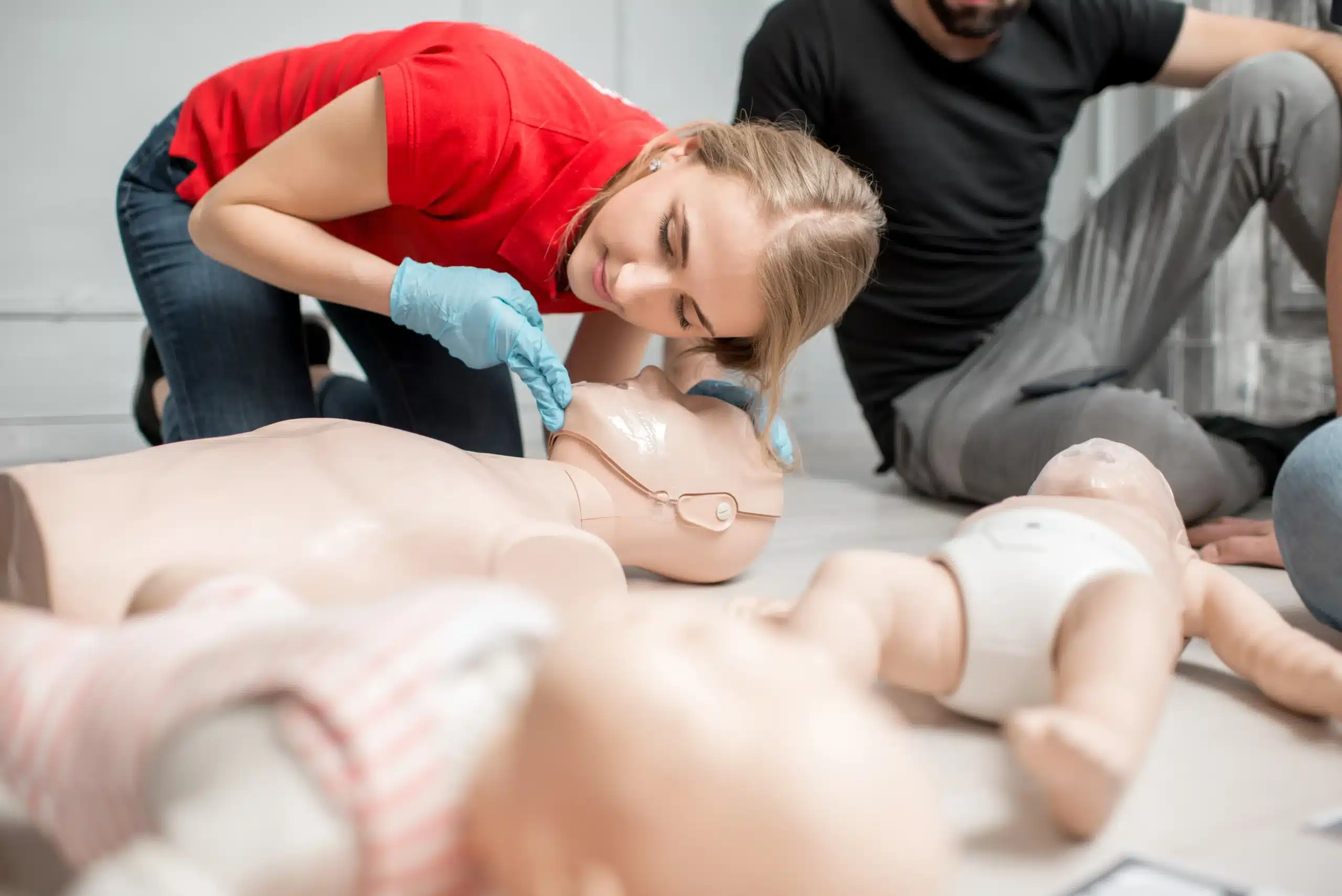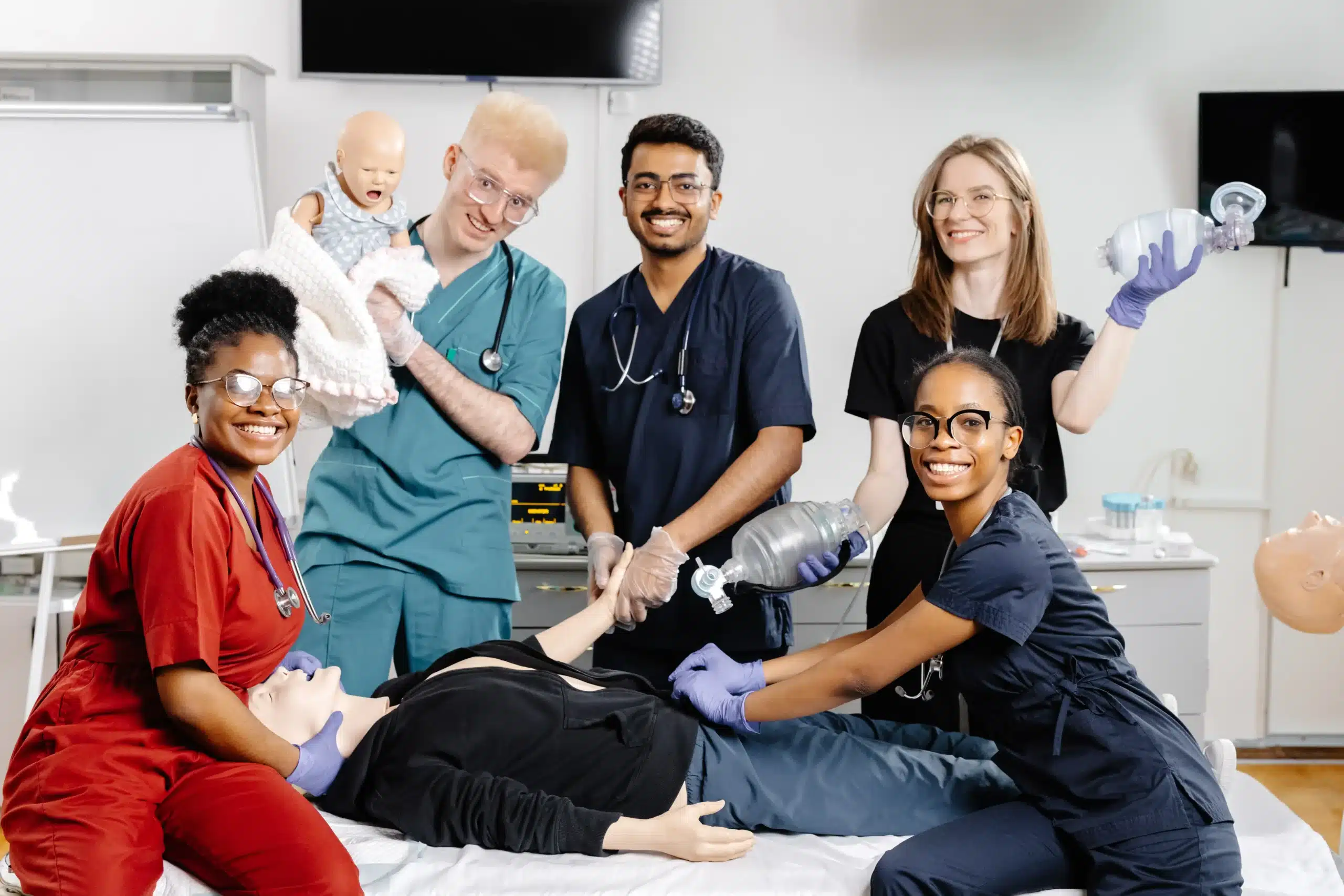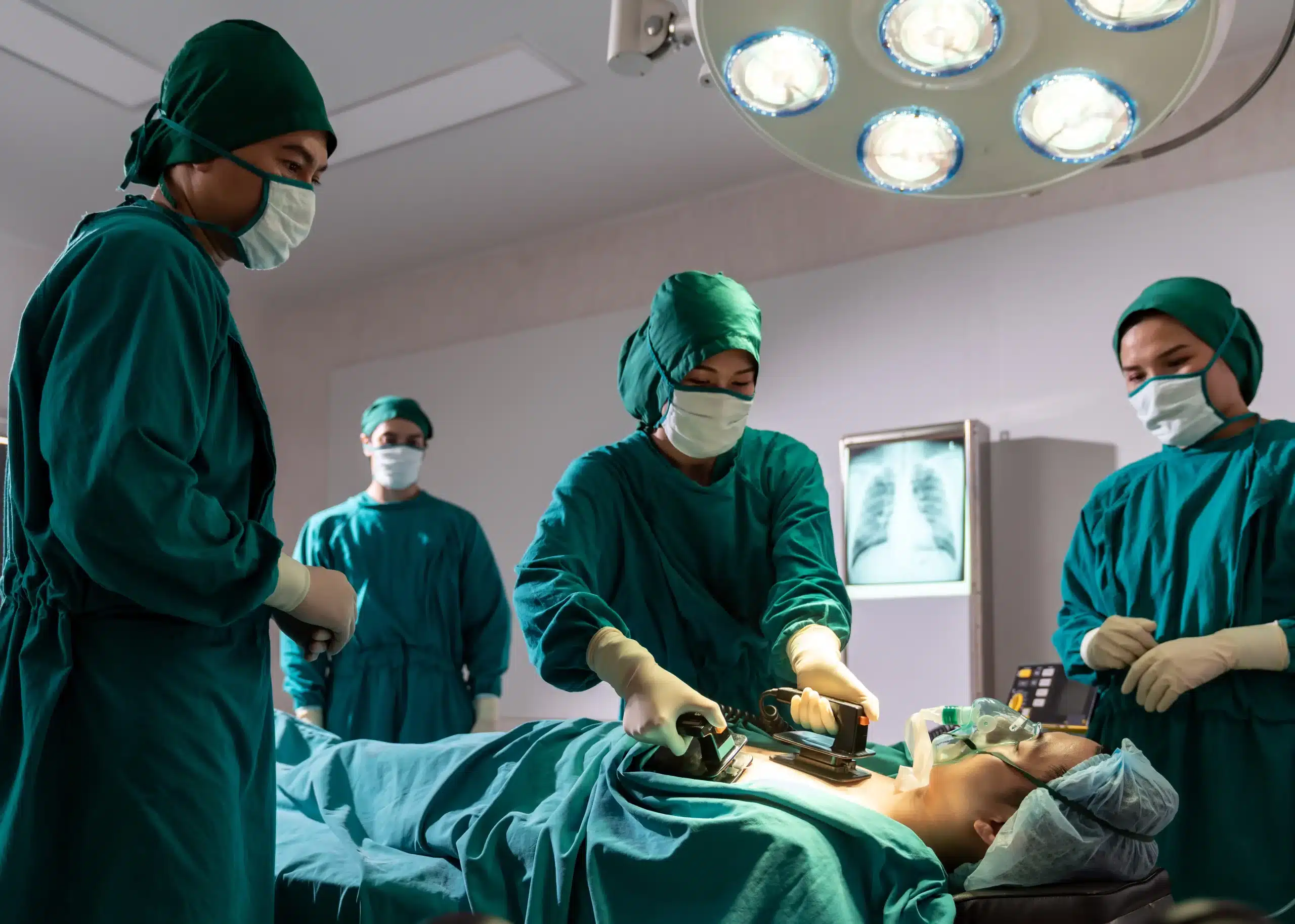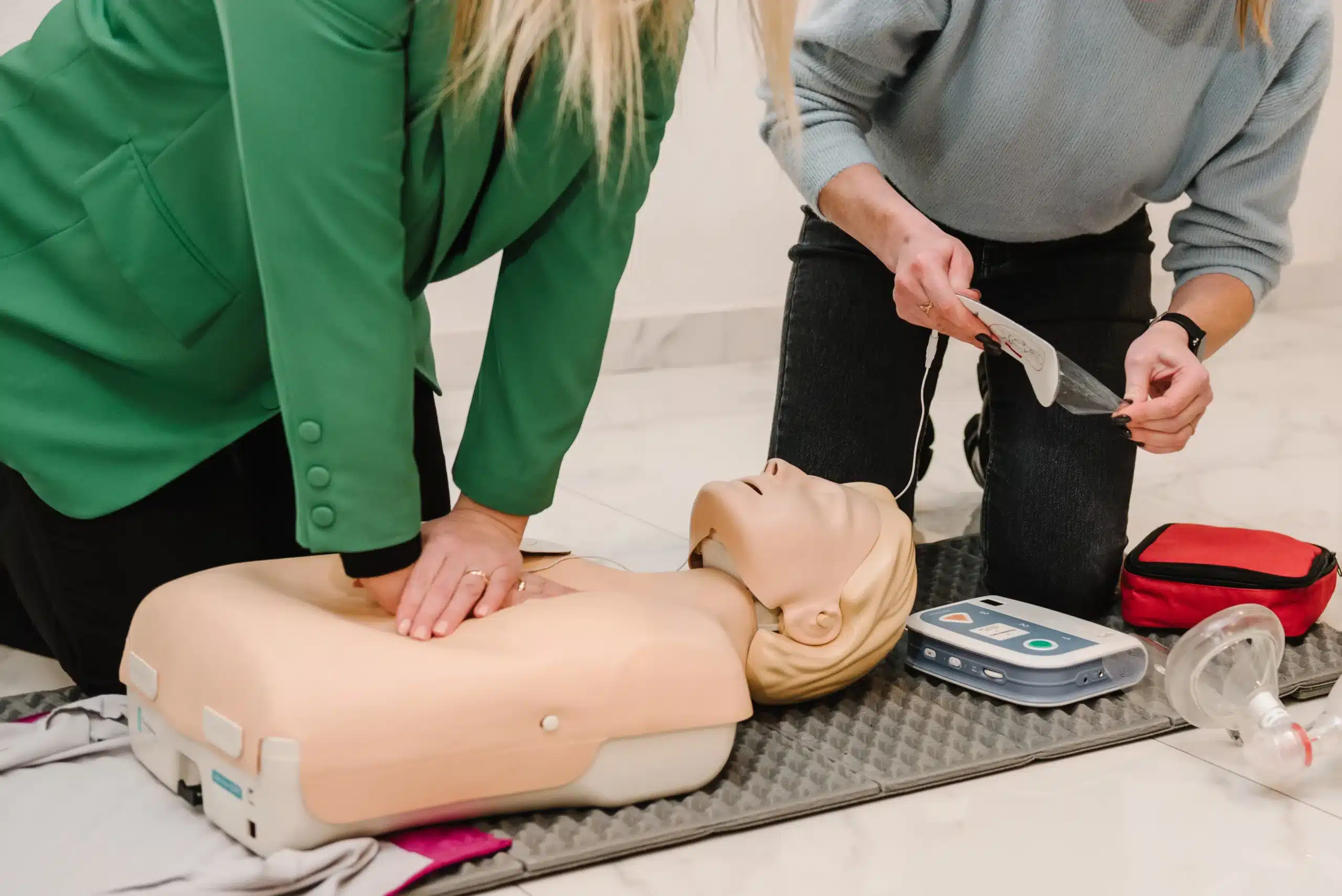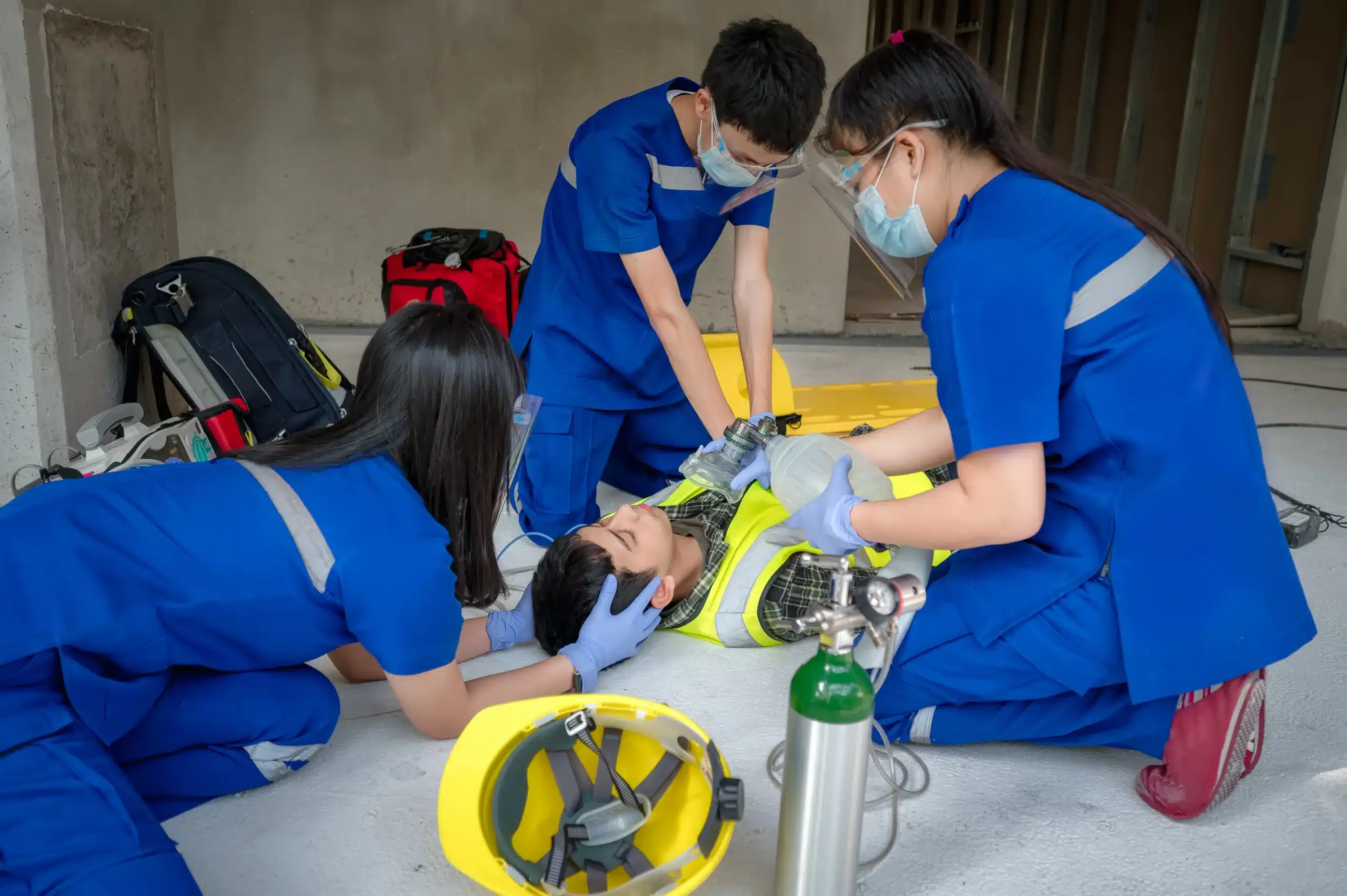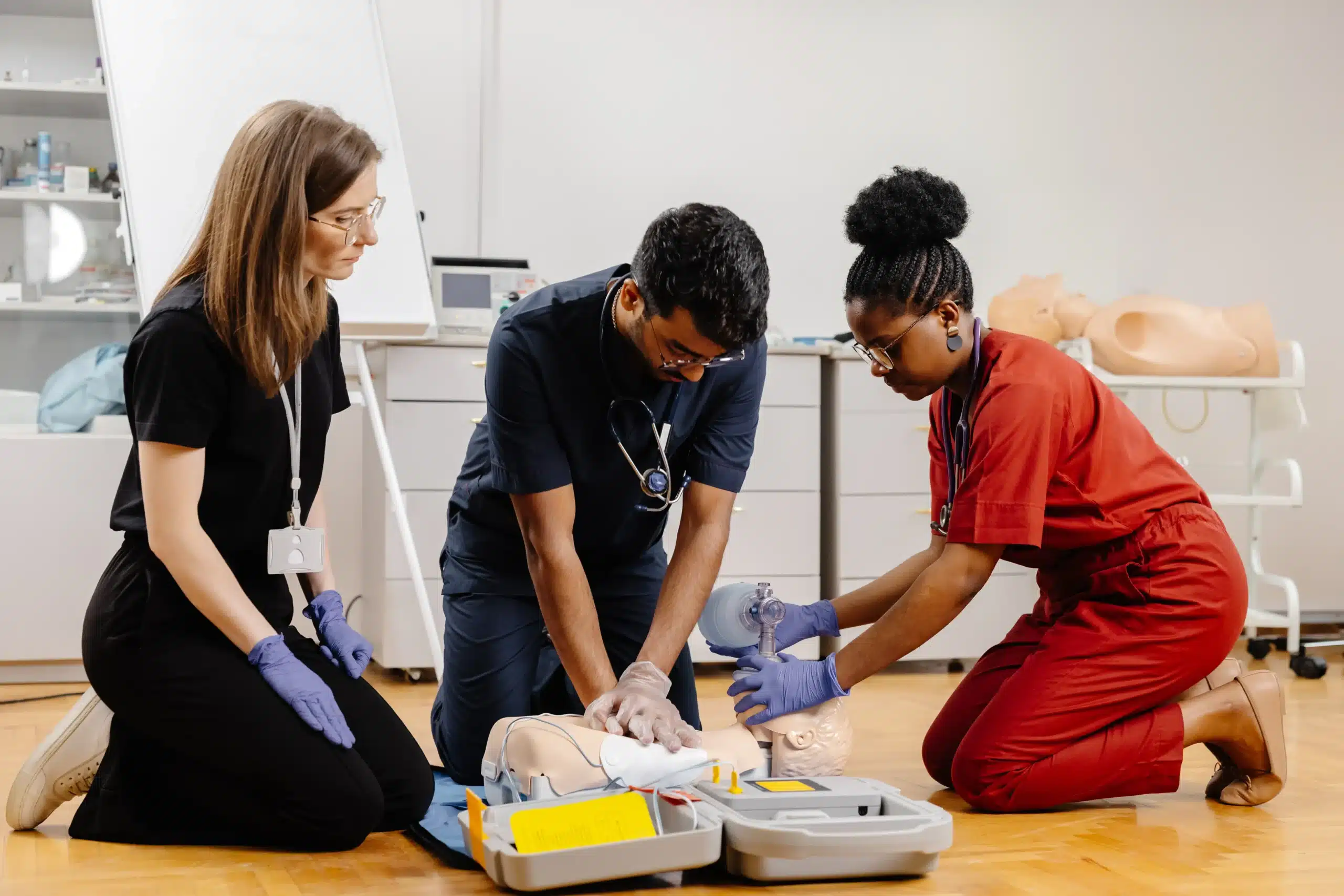Life is unpredictable, and knowing how to respond in a medical emergency can make all the difference. CPR is a powerful tool that can save lives, and becoming certified is easier than you might think. If you’re in Brentwood, California, and looking for high-quality CPR courses in Brentwood, this guide will help you find the right course for your needs. We’ll explore the different types of CPR training available, the costs involved, and the steps to get certified. Join us as we demystify CPR and empower you to become a confident first responder.
Key Takeaways
- CPR empowers everyone: Learning CPR, whether basic or advanced, equips you to make a real difference in emergencies. Explore options like BLS, ACLS, and PALS to find the right fit.
- Find the best learning format: Blended learning combines online flexibility with hands-on skills sessions. Consider your schedule and learning preferences when choosing a CPR course.
- Stay current with CPR: Keep your certification up-to-date and pursue continuing education to maintain your skills and knowledge. This ensures you’re always prepared for emergencies.
What is CPR? Why is it Important?
Cardiopulmonary resuscitation (CPR) is a life-saving technique used when someone’s heart stops beating. It involves chest compressions and rescue breaths to circulate oxygenated blood to the brain and other vital organs. Learning CPR can empower you to make a real difference in a critical situation. Think of it as a bridge, keeping someone alive until professional medical help arrives.
CPR is crucial because it helps maintain vital blood flow and oxygen levels when the heart isn’t pumping effectively. This can prevent irreversible brain damage and significantly increase the chance of survival. Effective bystander CPR can double or even triple a person’s survival rate after cardiac arrest. Those extra minutes before paramedics arrive can be the most important ones of someone’s life.
CPR Courses in Brentwood: Which One is Right for You?
Choosing the right CPR course depends on your individual needs and career goals. Here’s a breakdown of the different CPR courses offered in Brentwood to help you decide:
BLS
BLS (Basic Life Support) provides the foundation for saving lives. This course covers core CPR skills, including chest compressions, rescue breaths, and AED use. The American Heart Association’s BLS course is designed for healthcare professionals and anyone who might need to respond to a cardiac arrest or other emergency. BLS certification is frequently a job requirement in healthcare and provides essential skills for responding effectively in diverse settings.
ACLS
ACLS (Advanced Cardiovascular Life Support) expands on the skills learned in BLS. Geared towards healthcare providers managing complex cardiac emergencies, this course covers advanced airway management, pharmacology related to cardiac arrest, and effective team dynamics during resuscitation. ACLS certification demonstrates advanced expertise in cardiac care and is often required for physicians, nurses, paramedics, and other specialized healthcare professionals.
PALS
PALS (Pediatric Advanced Life Support) addresses the unique needs of infants and children during medical emergencies. This course equips healthcare professionals with the skills to recognize and manage pediatric respiratory distress, cardiac events, and other life-threatening situations. PALS certification is crucial for pediatricians, pediatric nurses, EMTs, and anyone regularly working with children in healthcare. It’s also a valuable qualification for childcare providers.
First Aid + CPR
Combining First Aid and CPR training offers a comprehensive skill set for handling various emergencies. This course covers essential first aid techniques for common injuries like burns, cuts, and fractures, in addition to CPR for adults, children, and infants. This combined certification is an excellent choice for anyone who wants to be prepared for everyday emergencies at home, work, or in the community. It’s also often a prerequisite for jobs in education, childcare, and fitness.
Best CPR Training in Brentwood
Finding the right CPR training can feel overwhelming, but Brentwood has several excellent options. Whether you’re a healthcare professional, a parent, or simply want to be prepared for emergencies, there’s a course out there for you. Here’s a rundown of some top CPR training providers in the area:
Safety Training Seminars
Safety Training Seminars offers AHA certification courses in CPR, BLS, ACLS, PALS, and First Aid right here in Brentwood. They understand busy schedules, so they offer classes daily from 8 am to 10 pm. You’ll receive an official AHA certification card, valid for two years, upon completion.
American Red Cross
Looking for the flexibility of choosing between AHA and Red Cross certification? Revive Health & Wellness partners with both organizations and offers same-day certification. They provide in-person CPR, first aid, and advanced life support training (BLS, ACLS, PALS) in Brentwood.
Local Fire Departments
Your local fire department is a valuable resource for CPR training. They frequently offer CPR training and certification courses, focusing on community safety. Check with your local fire station or their website for upcoming class schedules.
Revive Health & Wellness
As an authorized training center for both the AHA and the ARC, Revive Health & Wellness offers a convenient way to get certified. They provide in-person classes in CPR, first aid, and advanced life support (BLS, ACLS, and PALS) in Brentwood, with same-day certification available.
CPR Training Center of Concord
While located in Concord, the CPR Training Center of Concord serves Brentwood and the surrounding Contra Costa County areas. They specialize in ACLS, CPR, and PALS courses at their AHA-certified training center, ensuring high-quality instruction.
What Happens in a CPR Class?
Knowing what to expect can help you feel more prepared and confident going into your CPR class. Here’s a breakdown of what typically happens during a CPR course in Brentwood:
Class Length and Format
CPR classes in Brentwood combine online learning with in-person skills sessions. The online portion, like the HeartCode PALS course, usually takes around three to four hours to complete. This is followed by a short, hands-on skills check (about 30–40 minutes) at a local testing center. This blended learning format allows you to learn the material at your own pace online, then demonstrate your skills in person. Hands-on training is essential for effective CPR, and in-person classes provide the practical experience you need, along with personalized feedback from certified instructors.
Certification: How it Works
Upon successful completion of both the online coursework and the in-person skills session, you’ll receive your official American Heart Association certification card, valid for two years. With Safety Training Seminars, you’ll get your BLS certification card the same day you finish the course. This means you can immediately start using your new life-saving skills.
Practice and Skills Tests
During the hands-on portion of the class, you’ll practice on CPR training mannequins. This allows you to learn the correct hand placement and depth of compressions for effective CPR. You’ll also learn how to give rescue breaths and how to recognize the signs of a heart attack or stroke. The skills check isn’t designed to make you nervous; it’s simply a way to confirm you can confidently apply what you’ve learned. The instructors are there to guide you and answer any questions.
How Much Do CPR Classes Cost in Brentwood?
CPR classes in Brentwood vary in price depending on the provider, the type of course (CPR, BLS, ACLS, PALS, etc.), and whether you’re training as an individual or with a group. Knowing the typical price ranges can help you budget for this important training.
Price Ranges
Generally, CPR classes in Brentwood cost between $50 and $100. Safety Training Seminars offers a low price guarantee, so you can get high-quality training at a competitive rate. Check their website for the most up-to-date pricing on CPR courses. Comparing prices from different providers is always a smart move.
Group Discounts and Deals
If you need to train a group, like your employees or a community organization, ask about group discounts. Many CPR training providers in Brentwood, including Safety Training Seminars, offer reduced rates for group bookings. This can be a budget-friendly way to get everyone trained.
The Value of Life-Saving Skills
While cost is a factor, remember that learning CPR is an investment in potentially saving a life. Effective CPR helps maintain vital blood flow, increasing the chances of survival. The ability to perform CPR can make all the difference in an emergency. Consider the value of these skills and the peace of mind they provide.
Find the Right CPR Class
Choosing the right CPR class depends on your specific needs. Whether you’re a healthcare provider, a parent, or an employer looking to train your team, there’s a CPR course designed for you. Let’s break down the options to help you find the perfect fit.
For Healthcare Professionals
Healthcare providers like doctors, nurses, and EMTs need a comprehensive understanding of CPR and other Basic Life Support (BLS) skills. The American Heart Association’s BLS Course covers a wide range of in-facility and prehospital settings, ensuring you’re prepared for various emergencies. This course provides the in-depth training required for professionals in the medical field. You’ll learn the latest techniques and best practices for delivering effective CPR and other life-saving interventions. For specialized pediatric care, the PALS certification from the American Heart Association is also essential. Advanced Cardiac Life Support (ACLS) training is another crucial certification for healthcare professionals responding to cardiopulmonary emergencies.
For Parents and Caregivers
For parents, caregivers, teachers, and other individuals who want to be prepared for emergencies, the Heartsaver courses are a great option. These courses focus on practical skills you can use in everyday situations. You’ll learn how to perform CPR on adults, children, and infants, as well as how to respond to choking emergencies. Adding First Aid training to your CPR certification provides even more comprehensive life-saving knowledge. Consider our First Aid + CPR course for a combined learning experience. If you’re a new parent or grandparent, the NRP certification from the American Academy of Pediatrics focuses on neonatal resuscitation.
For Work
Many workplaces require or encourage employees to have CPR certification. This is especially true for businesses in healthcare, education, and childcare. Group discounts are often available, making it cost-effective to train your entire team. Bringing CPR training into your workplace not only equips your employees with essential skills but also creates a safer environment for everyone. For those working in childcare, the EMSA Child Care Health & Safety course offers specialized training. You can also explore our Northern CA CPR Directory for additional training resources in your area.
Online vs. In-Person CPR Training
Choosing between online and in-person CPR training depends on your learning style, schedule, and budget. Both formats have their advantages and disadvantages, so understanding the differences can help you make the best choice. Many organizations now offer blended learning, which combines the best of both worlds.
Blended Learning
Blended learning typically involves completing the cognitive portion of the course online at your own pace. This covers the “why” and “how” of CPR. Then, you attend a shorter, in-person session for a hands-on skills check and to receive your CPR certification. This format offers flexibility while ensuring you get the practice necessary to perform CPR effectively. It’s a popular option for busy professionals and those who prefer a more structured learning environment for the practical skills portion. Safety Training Seminars offers blended learning CPR courses in Brentwood.
Pros and Cons
Deciding which type of CPR training is right for you often comes down to weighing the pros and cons of each method.
Online CPR Training:
- Pros: Online courses offer unparalleled flexibility. You can study anytime, anywhere, fitting the training around your schedule. This is especially helpful for busy parents, professionals, or those with unpredictable schedules. Online CPR courses are often more affordable than in-person classes. You can learn more about online options in our guide to online CPR classes in Brentwood.
- Cons: The biggest drawback is the lack of hands-on practice with a qualified instructor. While some online courses may incorporate simulations, they can’t fully replicate the experience of practicing on a manikin and receiving real-time feedback. This can make it harder to retain the information and feel confident performing CPR in a real emergency.
In-Person CPR Training:
- Pros: In-person training provides the crucial hands-on practice and personalized feedback that online courses often lack. Instructors can correct your technique, answer your questions, and offer guidance tailored to your learning style. This direct interaction can significantly improve your confidence and competence. In-person CPR classes also offer the opportunity to connect with other students and learn from their experiences. For more information about the benefits of in-person training, check out this article debunking CPR misconceptions.
- Cons: In-person classes require a greater time commitment, as you need to attend a scheduled session at a specific location. This can be challenging for those with busy schedules or limited transportation options. In-person classes can also be more expensive than online options. However, the benefits of hands-on training and expert feedback often outweigh the added cost for many students.
CPR Training Myths: Debunked
It’s time to set the record straight. Let’s clear up some common misconceptions about CPR training. These myths can prevent people from learning this life-saving skill, so let’s break them down.
“CPR is Only for Medical Professionals”
This is absolutely false. While medical professionals certainly use CPR frequently, it’s a skill designed for everyone. In fact, bystander CPR can significantly improve the odds of survival during cardiac arrest. Think of it this way: the sooner CPR is started, the better the outcome. Waiting for paramedics to arrive can mean lost time, and in these situations, every second counts. Anyone can learn CPR—check out our CPR courses in Brentwood to find a class that fits your schedule.
“You Can Hurt Someone Doing CPR”
There’s a kernel of truth here, but it’s important to understand the context. Yes, ribs can sometimes be broken during CPR. However, consider the alternative: doing nothing. Broken ribs can heal, but without CPR, the chances of survival from cardiac arrest are drastically reduced. In a life-or-death situation, the potential for a broken rib is a small price to pay for the chance to save a life. Our instructors at Safety Training Seminars emphasize proper CPR technique to minimize the risk of injury while maximizing effectiveness.
“CPR Always Saves Lives”
Unfortunately, this isn’t true. CPR significantly increases the chances of survival, but it’s not a guarantee. It’s a critical link in the chain of survival, which also includes calling 911 and using an AED if available. Think of CPR as buying time until professional help arrives. It helps maintain blood flow to the brain and other vital organs, giving the person a fighting chance. Learn more about the importance of CPR and how it fits into the overall emergency response in our BLS course.
“CPR is Only for Heart Attacks”
This is another misconception. CPR is primarily used for cardiac arrest, which is different from a heart attack. While a heart attack can lead to cardiac arrest, other conditions can also cause it, such as drowning, choking, or electrocution. CPR is a vital response to any situation where the heart stops beating effectively. Our First Aid + CPR course covers a range of emergency situations, including when and how to perform CPR.
Get Ready for Your CPR Class
So you’ve signed up for a CPR class—congratulations! You’re taking a proactive step to learn a potentially life-saving skill. To make the most of your upcoming training at Safety Training Seminars, here’s how to prepare:
What to Bring
CPR classes are interactive and hands-on. Comfortable clothing is essential since you’ll want to move freely and kneel on the floor during practice. Bring a pen and notepad to jot down key points or any questions. While we provide all the necessary training equipment, consider bringing a water bottle and a small snack to stay energized.
How to Prepare
While no pre-course study is required for our CPR classes, a little preparation can increase your confidence. Reviewing basic first aid concepts can be helpful. If you want to go a step further, familiarize yourself with CPR techniques beforehand. Talking about CPR with friends or family can also make you feel more at ease with the material. Our instructors at Safety Training Seminars are experts in CPR training and will guide you through each step. We cover the latest CPR guidelines and best practices, so come ready to learn and practice! We’re excited to welcome you to our CPR training in Brentwood.
Keep Your CPR Certification Current
Renewing Your Certification
CPR is a vital skill to have in emergencies, but even well-learned techniques can fade with time. To be truly prepared to help when it matters most, keep your CPR certification current. American Heart Association (AHA) certification cards are valid for two years. This two-year validation period ensures that rescuers regularly refresh their knowledge and skills, staying sharp and ready to use the latest life-saving techniques. Mark your calendar and plan to renew your certification before it expires to maintain your preparedness.
Continuing Education
The field of CPR and first aid is constantly evolving, with new research and updated guidelines emerging frequently. Continuing education plays a vital role in ensuring you’re always equipped with the most current knowledge. The AHA offers HeartCode® courses, combining online learning with hands-on skills sessions. This blended learning approach offers flexibility and convenience, making it easier for both healthcare providers and community members to stay up-to-date with the latest resuscitation techniques and recommendations. The AHA regularly updates its CPR guidelines to reflect the latest research and best practices, so ongoing training ensures you’re always prepared to provide the most effective care.
Related Articles
- Why CPR is Crucial in Healthcare
- Online CPR Classes in Brentwood: Your Complete Guide
- BLS ACLS PALS Training: Your Ultimate Guide – Brentwood CPR Classes
- CPR Myths Debunked for Effective Life-Saving Skills
- Online CPR Classes in Concord: Your Certification Guide – Brentwood CPR Classes
Frequently Asked Questions
What’s the difference between BLS and CPR?
CPR is the core life-saving technique involving chest compressions and rescue breaths. BLS (Basic Life Support) builds upon CPR, adding essential skills like using an AED and providing ventilation. BLS certification is typically required for healthcare providers and those in professional rescuer roles. Think of CPR as the foundation, while BLS provides a broader skill set for emergency response.
How long does CPR certification last, and how do I renew it?
CPR certification, specifically from the American Heart Association, is valid for two years. Renewing your certification involves taking a refresher course before your current certification expires. This ensures your skills and knowledge are up-to-date with the latest guidelines. Contact Safety Training Seminars or your certifying organization for renewal options.
Which CPR class is right for me?
The best CPR class for you depends on your individual needs. If you’re a healthcare professional, BLS, ACLS, or PALS certification might be required. Parents, caregivers, teachers, or those wanting basic life-saving skills should consider a Heartsaver CPR/AED or First Aid/CPR/AED course. Safety Training Seminars offers a variety of courses to fit different needs, so explore their website or contact them for guidance.
What if I’m nervous about the skills test in the CPR class?
It’s completely normal to feel a little nervous about the skills test, but don’t worry! The instructors are there to support you and guide you through the process. The skills check is designed to confirm you can perform CPR effectively, not to make you feel stressed. Practice during the class and ask questions – the instructors are happy to help you build confidence.
Why should I choose Safety Training Seminars for my CPR training?
Safety Training Seminars offers high-quality, AHA-certified courses in Brentwood with a low price guarantee. They provide convenient schedules, including evening and weekend classes, and offer a blended learning format for flexibility. Their experienced instructors create a supportive learning environment, ensuring you gain the confidence and skills to perform CPR effectively.


